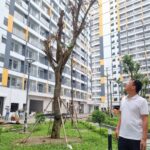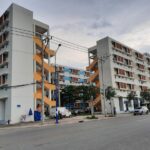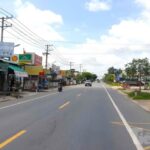At Resolution No. 01, dated January 5, 2024, the government directed the Ministry of Construction to coordinate with relevant ministries and branches to urge localities to focus on achieving the goal of completing 130,000 social housing units in 2024. However, this target is very challenging to meet.
Immediately after the Prime Minister issued Decision 338 on April 3, 2023, on building one million social housing units for low-income earners and industrial park workers by 2030, ministries, branches, and localities have implemented several solutions to realize this project. However, social housing development faces multiple challenges that need addressing.
Resolution No. 01, dated January 5, 2024, instructs the Ministry of Construction to work with relevant ministries and branches to urge localities to focus on the goal of completing 130,000 social housing units in 2024. Nevertheless, this target seems unattainable.

Recently, Prime Minister Pham Minh Chinh assigned the Ministry of Construction to lead the research and development of a new VND30 trillion credit package for social housing development and appointed the Social Policy Bank to implement it.
According to the Ministry of Construction, some localities have approved multiple projects’ investment proposals in the past but have not paid attention to selecting project investors for implementation. Some social housing projects have been started, but enterprises have not proceeded with construction or are behind schedule.
Mr. Hoang Hai, Director of the Housing and Real Estate Market Development Department of the Ministry of Construction, proposed: “For land funds without an investment proposal, we must establish one and then select the investor. Regarding the 20% land fund in commercial housing projects reserved for social housing construction, if the investor is unwilling to build, the locality should revoke and reallocate the land promptly.”
In addition to legal and procedural obstacles, affordable capital for both investors and homebuyers is another challenge. The VND120 trillion credit program for investors and homebuyers of social housing and worker housing projects and old apartment building renovation and construction has been implemented for a year and a half but has not been effective.

The goal of developing social housing remains challenging.
Although the State Bank has twice lowered the interest rate on the VND120 trillion capital source, the interest rate applied in the first half of 2024 was still 8% per year for investors and 7.5% for homebuyers, with a short preferential period (3 years for investors and 5 years for individual customers). These rates are not attractive to borrowers.
Economist Dr. Can Van Luc said: “We need to increase the attractiveness and marketability of social housing. Many projects are not selling because people do not find them appealing in terms of quality, location, and price. So, how do we make social housing an attractive asset? We must conduct accurate and appropriate surveys and evaluations to determine supply and demand.”
According to economic experts, to achieve the goal of developing social housing by 2030, there is a need for specific mechanisms and solutions to shorten administrative procedures related to project establishment and approval, land allocation and lease, site clearance, and investment construction to support and encourage enterprises to implement construction projects and provide supply to the market.
Recently, Prime Minister Pham Minh Chinh assigned the Ministry of Construction to lead the research and development of a new VND30 trillion credit package for social housing development and appointed the Social Policy Bank to implement it. Enterprises eagerly await the reasonable allocation of this credit package to benefit from it as soon as possible.
What Did the Ministry of Construction Report to the Prime Minister About the 1 Million Social Houses?
According to the Ministry of Construction, the number of social housing units completed from 2021 to the present (as of the end of August 2024) falls significantly short of the government’s target in the project to build 1 million social housing units, with only 428,000 units completed during the 2021-2025 period.
A Powerhouse Alliance: Thai Son and Saigon Thanh Dat’s Visionary Residential Project in Quang Tri Province
As per the Quang Tri Province’s Department of Planning and Investment, the consortium of Saigon Thanh Dat Agricultural Investment JSC and Thai Son Traffic Work Construction JSC is the sole investor registered to develop the Urban Housing and Social Housing Project in the Nam Dong Ha Industrial Park.
The Government Unveils Social Housing Development Plan Following the Secretariat’s Directive
Vice Prime Minister Tran Hong Ha has signed Decision No. 927/QD-TTg, issuing a plan to implement the Secretariat’s Directive No. 34-CT/TW, dated May 24, 2024, on strengthening the Party’s leadership in developing social housing in the new situation.
“Sacombank Offers Long-Term Deposit Certificates with 7.1% Annual Interest”
“Starting September 5, 2024, Sacombank is offering its clients an attractive investment opportunity with the launch of its registered long-term deposit certificates. With VND 5,000 billion on offer, individuals and institutions can now access a safe, long-term investment avenue, optimizing idle funds with higher returns compared to traditional savings accounts.”
The Ultimate Guide to the Upcoming 16-Storey Social Housing Project in Can Tho
The People’s Committee of Can Tho City has approved a proposal to rezone a plot of land in Thot Not District, adjacent to the city’s largest industrial park, from a workers’ residential apartment complex to a social housing apartment complex. This decision also allows for an increase in the maximum height of the building from 5 to 16 stories, offering a significant boost to the area’s housing capacity and accessibility.




















